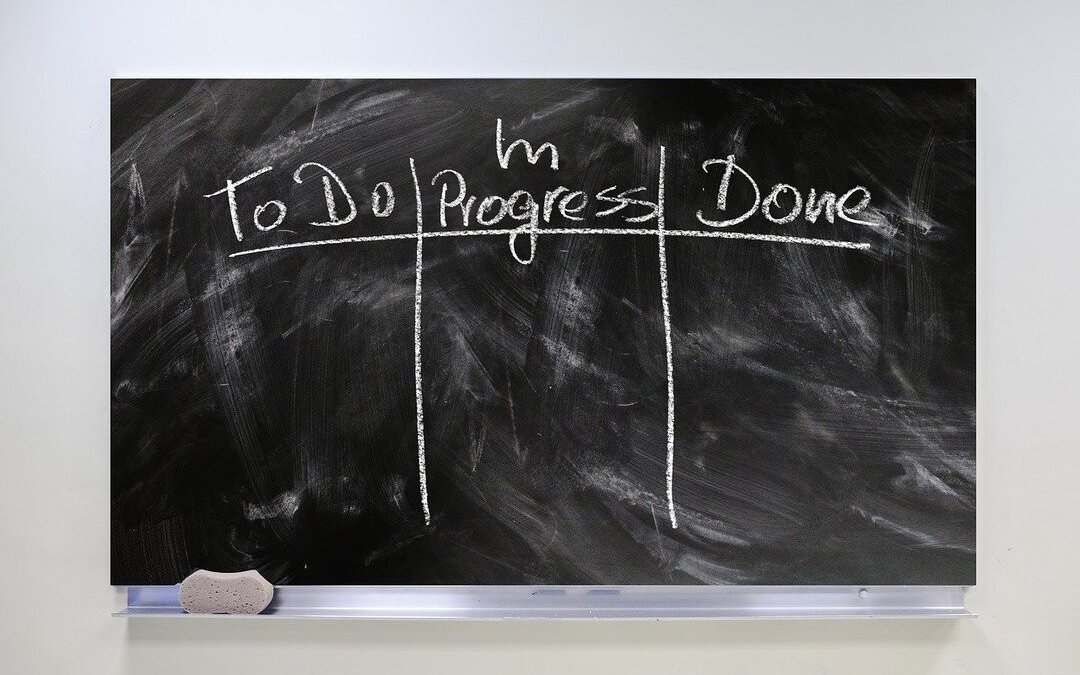
Introduction
Kanban is a visual project management method that (among other things) optimizes workflow by displaying tasks on a board, limiting work in progress, and continuously improving processes based on feedback.
Its no secret that we love Kanban. In this post we'll share some tips we employ in order to use it effectively.
1. Keep it simple
It can be tempting to create a column for every little step a card can pass through, but it may lead to unnecessary complexity, and constantly checking in and moving a task quickly becomes old. We recommend that you start with a few simple columns that you know you're going to use, and let your board evolve naturally from there.
Example:
- We start with only three columns: "Backlog", "In progress", and "Done".
- As work items start becoming more complex we add the column "Ready for work". A card is taken from "Backlog", split into smaller, actionable cards (≤ 1 day of work per card), and moved into this new column.
- When we have a QA-process in place we might add a column called "Ready for review" that cards must touch before they can be moved to "Reviewed" or “Done”.
- If the product owner wants to record ideas in the board we can add an "Ideas" column to the left of the "Backlog" column.
- We continue gradually adding (and removing!) columns to improve our workflow.
2. Involve the team regularly
Assemble your team for brief daily sessions to go over the board. This allows everyone to check the current status of each card and easily understand the upcoming work. Additionally, it's an ideal time for daily planning or for team members to voice any issues or concerns about their work.
3. Card design
The Cards should offer precise definitions to eliminate ambiguity, ensuring that there's no room for subjective interpretations of the cards' purposes.
The level of detail required depends on the column the card is currently located in. Cards in an "Ideas" column can be very rough drafts, cards in "Backlog" must at a minimum convey the business requirements thoroughly, and cards in "Ready for work" should contain all necessary information required to start working on them.
4. Blocked cards
A "blocked card" represents a work item that has encountered an obstacle or issue preventing it from progressing further in the workflow. It can be tempting to create a "Blocked" column where you can put cards out of play. While that is fine, we prefer to leave the card in its current column and make it visually distinguishable from other cards (e.g. a red background or label).
5. Don't forget to limit work in progress
By concentrating on fewer tasks at a time, teams can improve the quality of their work and reduce errors that often arise from too much multitasking. This focused approach also leads to faster task completion, as the reduced overhead of juggling multiple tasks allows for more efficient work.
Set a limit on how many cards can exist in columns at the same time. Pay extra attention to columns that are prone to bottlenecks.
6. Be explicit about the rules
Everyone on the team should at a minimum know:
- What conditions must be met in order for a card to move out of, or in to, each column.
- Which columns are mandatory and which are optional.
- What the limit (number of cards) of each column is and why it was set.
- When a card can be removed from the board.
7. Use swimlanes (only) for complex workflows
Swimlanes can be used to categorize tasks by type, priority, or team responsibility to enhance workflow clarity and focus. They are particularly useful for prioritizing urgent work (e.g. bugs), managing several related projects in a single board, and tracking dependencies.
8. Encourage continuous improvement
Regularly review the workflow and make incremental changes to solve problems as they arise. Create a culture of continuous improvement that keeps your board in alignment with changing demands, team composition, and goals.
